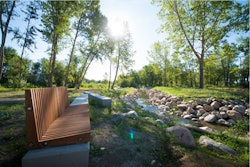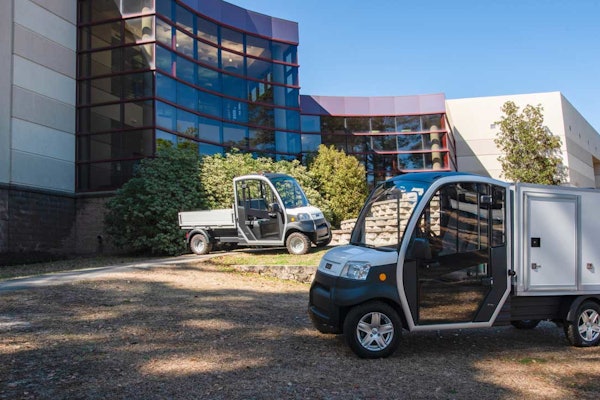
Depending on the services your company offers will determine what are the most common hazards employees will be exposed to.
Wearing the proper personal protective equipment can prevent most injuries from occurring, but some of the common mishaps landscapers can encounter are cuts and lacerations, bites and stings, and falls.
Cuts and lacerations
Power tools are the common cause of most cuts and lacerations in the green industry, but even sharpening mower blades can result in a nasty slice if workers aren’t careful.
If you or a co-worker sustains a minor laceration where serious blood loss is not likely, the first thing to do is to apply pressure to stop the bleeding.
Use sterile gauze or a bandage to apply pressure directly to the wound. Elevate the injured extremity above the heart level to reduce blood flow. Placing pressure on the nearest main artery can also slow the bleeding. If the bleeding does not stop after 15 minutes, call for emergency medical help immediately.
Once the bleeding has stopped, clean the wound with hydrogen peroxide or a saline solution. Apply antibacterial ointment to the bandage and cover the wound. Depending on the severity, the employee should be taken to a medical facility if sutures are needed to close the wound.
For more severe lacerations, it is crucial to stop or control the blood loss as soon as possible as arterial bleeding can cause a person to bleed out in a matter of minutes. Deep cuts can also result in cut nerves or tendons that require immediate medical attention.
If the worker has been impaled or punctured with a foreign object do NOT to remove it. When wrapping the wound, apply padding on either side of the object. Emergency room personal will be able to handle the removal safely.
Bites and stings
Working in the great outdoors means dealing with all its creatures too and that includes the not so friendly ones.
Most insects and animals prefer to be left alone and only attack in self-defense, but sometimes landscapers can startle them on accident and end up bitten or stung for their trouble.
Various dangerous snakes and spiders live in different regions so it is important to know which are prevalent in your area and how to recognize them. If a co-worker is bitten by a snake or a spider, call 911, especially if the area changes colors, begins to swell or is painful.
Do not try to apply ice to the wound or attempt to remove the venom. Remain calm and keep the bite below heart level, if possible.
If a worker is stung by a bee, the barb should be removed as soon as possible as the venom sac attached to the barb will continue to inject venom until it is empty. Wasps tend to sting in swarms and can sting multiple times.
To control swelling, apply an ice pack and raise the bitten areas. Antihistamines can also help with the itching and swelling. Because most people are unaware of their allergies until they have a serious reaction it is a good practice for landscaping crews to carry Epi-pens.
If a co-worker does have a serious reaction, this injector provides the right amount of epinephrine to treat anaphylactic shock. Symptoms of an allergic reaction include wheezing or coughing, and swelling around the face, eyes and neck.
Falls
Falls are the most common cause of work-related injuries and fatalities. If a fellow employee has fallen from a tall height, call 911 immediately. Do not try to move them, but try to make them comfortable as possible and keep them warm.
If a person falls from a lower height, bring a chair close by and help the person slowly move to rest in the chair. Even if it appears no harm is done, symptoms can appear in the days following a fall.
Workers should see a doctor if they lost consciousness just before or after the fall, have a strong or lingering pain, experience dizziness, nausea, headaches, vision problems, or overall weakness.









